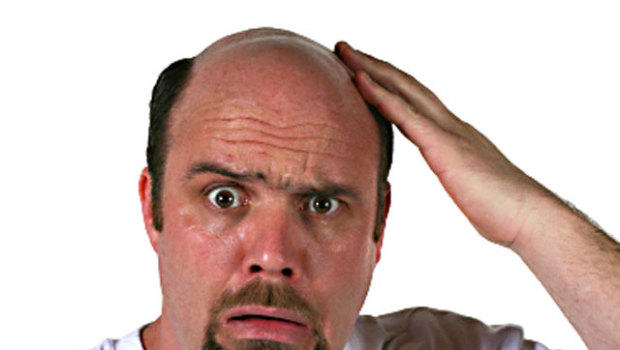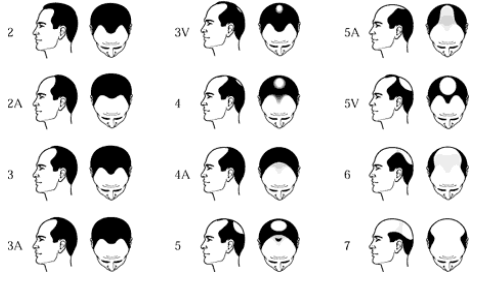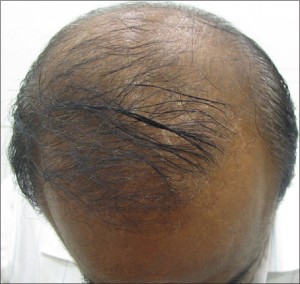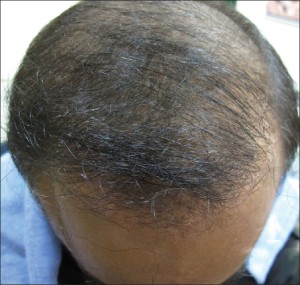 I am 18 years old and am already noticing that my hairline is beginning to recede. Granted, baldness runs in my family so maybe I should have seen this coming. Over 50 percent of men will have to deal with this problem by the time they are 50, and it can be quite demoralizing. So is there an answer to male pattern baldness? Medicine is good right now and it is getting better, but there still is no perfect cure. Right now, the best thing we can do is delay the balding process. Maybe a look at what researchers are currently testing will show us what needs to be discovered and where science must eventually progress to help solve this issue.
I am 18 years old and am already noticing that my hairline is beginning to recede. Granted, baldness runs in my family so maybe I should have seen this coming. Over 50 percent of men will have to deal with this problem by the time they are 50, and it can be quite demoralizing. So is there an answer to male pattern baldness? Medicine is good right now and it is getting better, but there still is no perfect cure. Right now, the best thing we can do is delay the balding process. Maybe a look at what researchers are currently testing will show us what needs to be discovered and where science must eventually progress to help solve this issue.
To start, the cause to male pattern baldness, more formally known as androgenetic alopecia, is not fully understood. This is part of the reason why there is still no perfect cure to the problem. As of now, what we know is men that experience androgenetic alopecia have hair follicles that are sensitive to Dihydrotestosterone (DHT). Dihydrotestosterone is a hormone that is responsible for male sexual development, regulating hair growth, regulating sex drive, and most importantly, shrinking hair follicles over time. So, to stop hair loss, it seems we have to slow the production of DHT.
The FDA currently approves two treatments for androgenetic alopecia: Finasteride, which inhibits Type II 5-alpha-reductace, lowering DHT, and Minoxidil, a topical solution. However, since minoxidil does not do anything to stop the production of DHT, there are usually no long-term effects.

This is the Hamilton-Norwood scale, which measures the progression of androgenetic alopecia
As a male who is at the beginning stages of this process (I am at a 2 on the Hamilton-Norwood Scale), I want as much research being done as possible. There has been plenty of research to find the best inhibitors of DHT, but I wonder if DHT is not the only cause to hair loss. Two experimental treatments I will examine are caffeine and microneedling.
In 2011, there was a study done in Italy to determine the effectiveness of a cosmetic lotion containing caffeine to treat androgenetic alopecia. The sample the researcher used was 40 volunteers aged between 19 and 55 that were currently in stages 2-4 on the Hamilton-Norwood scale. All participants were instructed that for 4 months, they would massage this lotion in their hair for two minutes once a day. At the end of 4 months, there was a decrease in hair loss in 83 percent of the volunteers and an improvement of scalp conditions (dandruff, dryness) in 53 percent of the volunteers.
This idea of using caffeine to stop male pattern baldness is interesting due to its ability to “stimulate cellular metabolisms”, which can stop the shrinking of hair follicles. Also, caffeine penetrates hair follicles very quickly so results would show much quicker than other treatments.
Unfortunately, this study has a poor experimental design and not many other studies have shown promising results. For one, this study only has 40 participants. That is questionable whether that is enough people to be confident about extending the results to a bigger population. Also, there is not a control group. All 40 participants received the treatment so there is no baseline group to compare hair growth results. I would have been more convinced if half of the participants were given a placebo shampoo to see if they experienced similar subjective results to the caffeine group. Further, there is no way to know if the participants actually used the product once a day like they were supposed to since the participants were not under the researcher’s observation. Overall, much more could have been done by manipulating the explanatory variable, separating the participants into experimental groups, measuring the results more objectively, and using a more adequate sample size.
In another study conducted by Rachita Dhurat, it was found that microneedling (the act of puncturing the skin repeatedly with extremely small needles) might also be an effective alternative treatment for androgenetic alopecia by stimulating hair follicles. This was a case study that followed 4 men that originally showed no results from Finasteride of Minoxidil. Over the course of a 24-week period they received 15 treatments using microneedling. After 6 months, each patient saw new hair coverage that moved him or her up on the Hamilton-Norwood scale from 2 to 3 points. Also, 3 of the patients subjectively reported a 75 percent increase of thickness to hair while the fourth patient reported a 50 percent increase in hair thickness. Finally, all 4 patients maintained the same response from the treatment 18 months later. Look at the first patient’s results!
These results should be taken with a grain of salt. The sample size was only 4 people so there is no way to extend these results to the population. However, with the significant increases of hair seen in these 4 patients, more experiments with larger sample sizes should be conducted to validate Dhurat’s findings.
It should also be noted that all of the patients continued to use their original treatments of either Finasteride or Minoxidil during the experiment. This means finding a causal relationship between microneedling and hair regrowth is nearly impossible due to Finasteride and Minoxidil’s potential to be confounding variables. I would propose an experiment similar to this one with the use of microneedling techniques. However, with my experimental design, I would like to have a sample size that has no less than 30 people and a control group that doesn’t receive the microneedling treatment as a means of comparison. I would also make sure no patients were using Finasteride or Minoxidil so a more causal relationship could be established. I would measure by testing hair strength (maybe a pull test), and objective observations made by someone who is not the researcher, to control for the experimenter effect.
To conclude, male pattern baldness is a serious issue that affects men’s psychological health and self-esteem. Finasteride and Minoxidil are good treatments but their success rate is not much higher than 60 percent so continuous research must be done. Though this problem seems to be connected to DHT, eliminating it may not be the best answer. There may be other factors driving the relationship between DHT and hair loss that have yet to be discovered. So there are two options: Science must either further its research in treatments that better eliminate DHT, or start researching new ways and other mechanisms that can be responsible for male pattern baldness. Though it may seem insignificant compared to other issues in the world, we must not stray away from finding a cure for this phenomenon. With the persistence of the scientific method, there is potential for a 60 percent success rate to one day be a nearly 100 percent success rate this way, no man ever has to be stripped of his dignity.
Photo URLs



I always heard the story that baldness comes from your mother’s side of the family, and if your uncles were safe you would be fine. I know that isn’t true and genes from both sides affect hair loss. It is cool to see though that there are treatments out there to fix this problem that I know a lot of people suffer from.